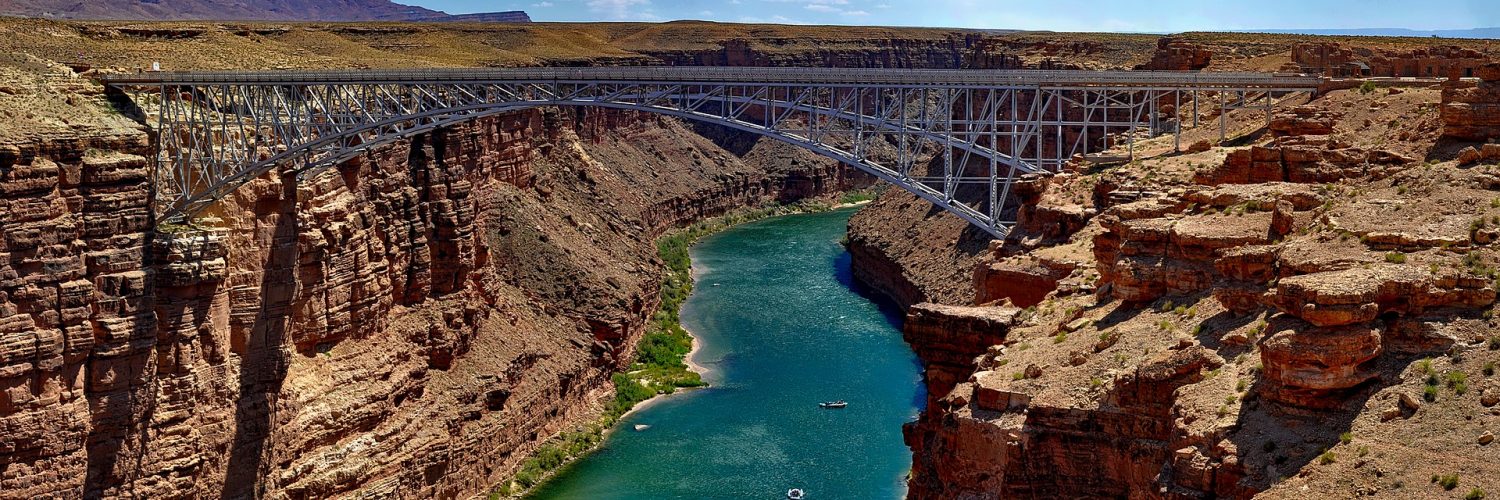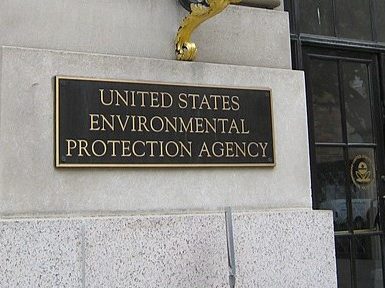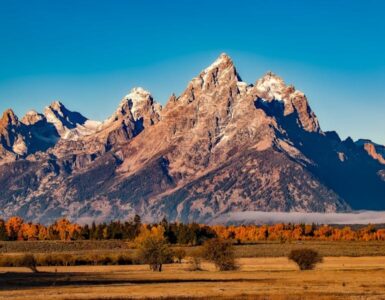President Donald Trump signed historic legislation Tuesday to save the lifeblood of the Southwest, the Colorado River.
Seven states, Mexico, dozens of competing water interests, Arizona’s state legislature, and Congress all beat the odds to do their part to get the agreement to the president’s desk in the nick of time. The river is vanishing under a record breaking 19-year drought. Arizona leaders played a critical role.
In a tweet announcing the signing, Trump gave a shout out to Arizona’s U.S. Sen. Martha McSally, who led the effort to get the measure through the U.S. Senate. Arizona’s Rep. Raúl Grijalva led the effort in the U.S. House.
“Just signed a critical bill to formalize drought contingency plans for the Colorado River. Thanks to @SenMcSallyAZ for getting it done. Big deal for Arizona!,” Trump tweeted.
The monumental pact will protect Colorado River water supplies that quench the Southwest including three expanding megaregions in Arizona and California.
It was the final touch to a years-long struggle to get a plan in place.
Gov. Doug Ducey Tuesday thanked Grijalva and McSally and everyone else involved.
“The Drought Contingency Plan is a monumental, bipartisan achievement,” Ducey said in a prepared statement. “Drought is by far one of the most pressing issues Arizona faces and now we’re one step closer to protecting our water supplies and securing Arizona’s water future. We’ve been able to move this plan forward by putting party labels aside and putting Arizona first. I’m grateful to Arizona’s congressional delegation for promptly introducing and passing legislation to implement the DCP.”
Governor led by the golden rule
Arizona water leaders and Gov. Doug Ducey spent months corralling and cajoling water representatives to make it happen. The governor stepped in repeatedly to secure funding and help broker deals when infighting stalled the process.
Ducey made it clear: everyone was expected to share in the pain to conserve water.
The legislation, the Colorado River Basin Drought Contingency Plan Authorization Act (DCP), lays out how states will leave water in the river’s two main storage lakes, Lake Mead and Lake Powell. The pact will prevent elevations from dropping to crisis levels.
Seemingly endless drought draining river
Colorado River water supplies are vanishing under a record-breaking drought. A plan to protect the region’s water had to be fast tracked when new dire water shortage projections surfaced last year.
The intent of the new agreement and legislation is to keep water elevations stable in the two lakes for another seven years.
Arizona’s part of the DCP took years to negotiate as water interests clashed over how to protect lake elevations. Now in place, the DCP also will protect the robust multi-billion dollar agricultural economy in Pinal County that could have been severely harmed under outdated guidelines created in 2007.
Another separate deal that hinged on passage of Arizona’s DCP will provide water to home builders in the state’s populous and growing megaregion – the Sun Corridor – for decades to come. The 25-year deal allows developers to buy water from the Gila River Indian Community.
Without the updated drought plan, the lakes were expected to likely dip to crisis levels by 2021 or 2022.
With the agreement and legislation in place, that risk is reduced 50 percent, according to the federal Bureau of Reclamation Commissioner Brenda Burman.
Stepping up to save Arizona water
Arizona was key in averting disaster. It also had the most to lose.
As a state with only junior rights to river water, it receives the biggest cuts to water supplies when an official shortage is declared.
Gov. Ducey had enormous shoes to fill when confronted with new water shortage projections. He had to step into the footsteps of historic Arizona water brokers like Carl Hayden, Bruce Babbitt and Jon Kyl to find a way forward.
As with his predecessors, there were obstacles everywhere.
A cast of water stakeholders had wrangled for three years in disagreement over how to implement Arizona’s part of the drought contingency plan that triggers reductions in river water supplies to conserve water in Lake Mead when a shortage occurs. Federal officials were warning of stepping in. Another grim prospect was fear of other states stockpiling river supplies while Arizona dawdled.
Gov. Ducey jumped in at critical moments to provide funding. The legislature approved his request for $30 million for Lake Mead conservation and another $2 million for groundwater conservation, and an additional $9 million for groundwater pumping infrastructure for Pinal County agriculture to move away from dependence on the Colorado River.
Competing water interests struggled to get it done
A steering committee of almost 40 water interests was also under the gun. They were charged with negotiating the intrastate deals. They felt the pressure as deadlines approached, said one of the committee members, Cheryl Lombard, CEO and President of the longstanding Valley Partnership that advocates for the real estate industry in central Arizona.
“One of the most challenging aspects was realizing that they not only had to get a plan in place quickly, but prove to the federal government that Arizona could successfully reach consensus,” Lombard said. “We all needed to realize this is the time for all to give a little and not to take advantage of any political opportunities.”
Another committee member, Stefanie Smallhouse, President of the Arizona Farm Bureau, said negotiations became particularly tense in the final weeks.
“At one point, a number of high priority water entities including cities and the tribes said they would be increasing their water orders for river supplies for 2019, putting lower priority water users like Pinal County agriculture at risk,” Smallhouse said.
“That changed the entire landscape for the mitigation negotiations we had been working on for months,” she said.
When Gov. Ducey clearly outlined what outcome would be acceptable to him, it forced the process back on track, Smallhouse said.
“Even though it made the process more painful at times, it provided the sideboards necessary to keep us focused,” she said. “Having the committee co-chaired by both the Department of Water Resources and CAWCD was a wise choice and reflected that the Governor was sincere about a well-rounded solution coming out of the diverse committee.”
Arizona’s water legacy continues
Glenn Hamer, President and CEO of the Arizona Chamber of Commerce and Industry, said the intrastate deal could not have been reached without the governor’s relentless pursuit of an agreement.
“Because of his never-wavering commitment to bringing all affected parties together over the must-pass DCP, Gov. Ducey now stands among the giants of Arizona water policy like Jon Kyl, Bruce Babbitt, and Carl Hayden,” Hamer said. “Without Gov. Ducey’s leadership, this deal doesn’t get done. The Arizona of tomorrow is stronger and more vibrant because of Doug Ducey.”
In the end, it was a tremendous effort by everyone involved. Here are some of the others that made it happen:
Water leaders Tom Buschatzke and Ted Cooke After leading a failing effort for years to get an updated DCP in place, Buschatzke, the director of the Arizona Department of Water Resources, and Cooke, the general manager of the Central Arizona Project, forged a union to get it done. Both co-chaired the 40-member committee of representatives from cities, tribes, water districts, agriculture, industry, home builders, non-profits, legislators and others to negotiate how to share the pain of cuts to supplies. Through months of heated negotiations, these two never wavered, working day and night, weekends and holidays and answering questions and patiently and articulately explaining the complex language of water and all its acronyms.
Central Arizona Water Control District This 15-member governing board oversees CAP that carries in all of the Colorado River to inland counties Maricopa, Pima and Pinal. Time after time the board stepped in to push the plan forward when it stalled. The board committed to funding, water supplies, and assistance for Pinal County agriculture. It forced everyone’s hand by presenting and approving the first draft of the plan when infighting was blocking progress.
Tribal community leaders Stephen Roe Lewis and Dennis Patch As two of the largest holders of Colorado River supplies and members of the statewide committee, Gila River Governor Lewis and Colorado River Chairman Patch entered agreements to sell large amounts of water to leave in Lake Mead. In a separate agreement, Lewis brokered a 25-year $95.7 million deal that will provide water supplies for development in central Arizona’s growing megaregion for decades to come, with or without a water shortage.
Others also made significant contributions. Cities, water districts, water companies and other water holders agreed to share water and assistance. The non-profit Walton Foundation committed $8 million in funding for water conservation. The federal Bureau of Reclamation is expected to pay $21 million for the Gila River water to be left in the lake.
With the DCP in place, Arizona’s water supplies are safe for now.
Ducey is already moving forward on the next step, a new DCP in 2026. He issued an Executive Order creating the Water Augmentation, Innovation, and Conservation Council comprised of legislative leadership, state water leaders and other appointees, it will focus on long-term water conservation and innovation.
For more information on the Drought Contingency Plan, click HERE.
For DCP “By The Numbers,” click HERE.
















Add comment